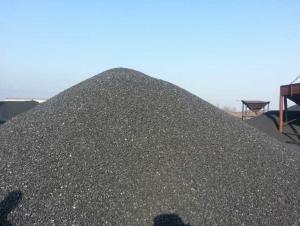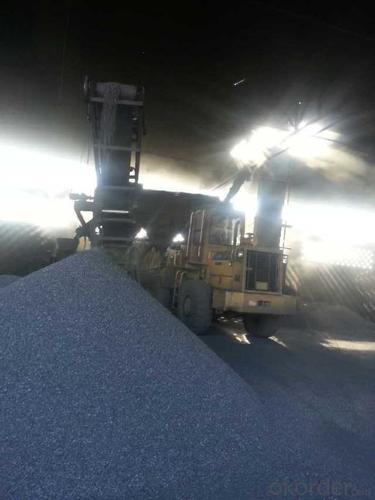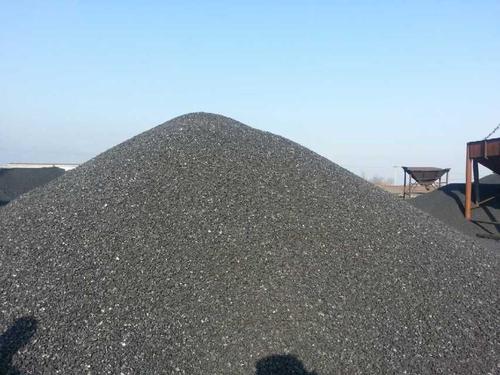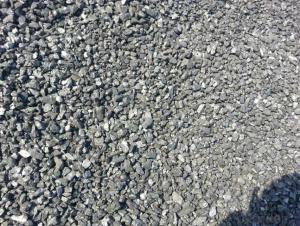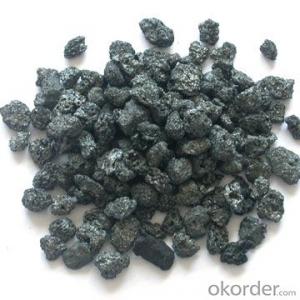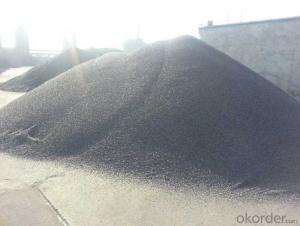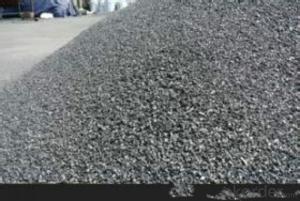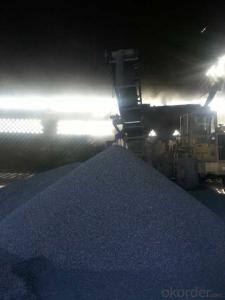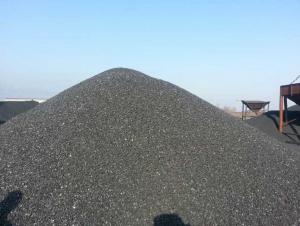Steel Plant and Manufacturer Injection Carbon FC95 for
- Loading Port:
- Tianjin
- Payment Terms:
- TT OR LC
- Min Order Qty:
- 20 m.t.
- Supply Capability:
- 5000 m.t./month
OKorder Service Pledge
OKorder Financial Service
You Might Also Like
Injection Carbon FC95 with good and stable quality
Packaging & Delivery
25kgs/50kgs/1ton per bag or as buyer's request
Specifications
Injection Carbon FC95 with good and stable quality
Calcined Anthracite
Fixed carbon: 90%-95%
S: 0.5% max
Size: 0-3. 3-5.3-15 or as request
Injection Carbon FC95 with good and stable quality
Advantage and competitive of caclined anthracite:
1. strong supply capability
2. fast transportation
3. lower and reasonable price for your reference
4.low sulphur, low ash
5.fixed carbon:95% -90%
6..sulphur:lower than 0.3%
Injection Carbon FC95 with good and stable quality
General Specification of Calcined Anthracite:
| FC | 95 | 94 | 93 | 92 | 90 |
| ASH | 4 | 5 | 6 | 6.5 | 8.5 |
| V.M. | 1 | 1 | 1 | 1.5 | 1.5 |
| S | 0.3 | 0.3 | 0.3 | 0.35 | 0.35 |
| MOISTURE | 0.5 | 0.5 | 0.5 | 0.5 | 0.5 |
Pictures
Injection Carbon FC95 with good and stable quality
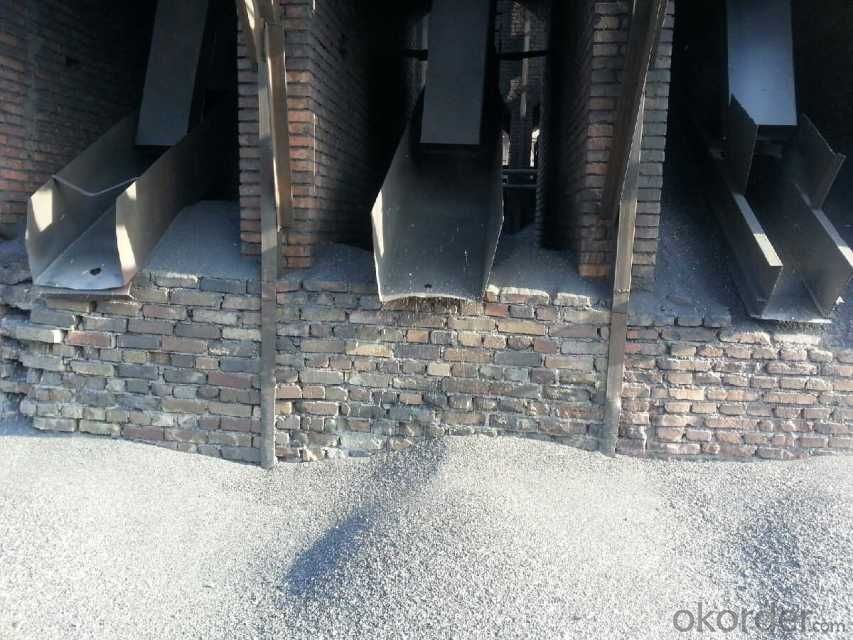
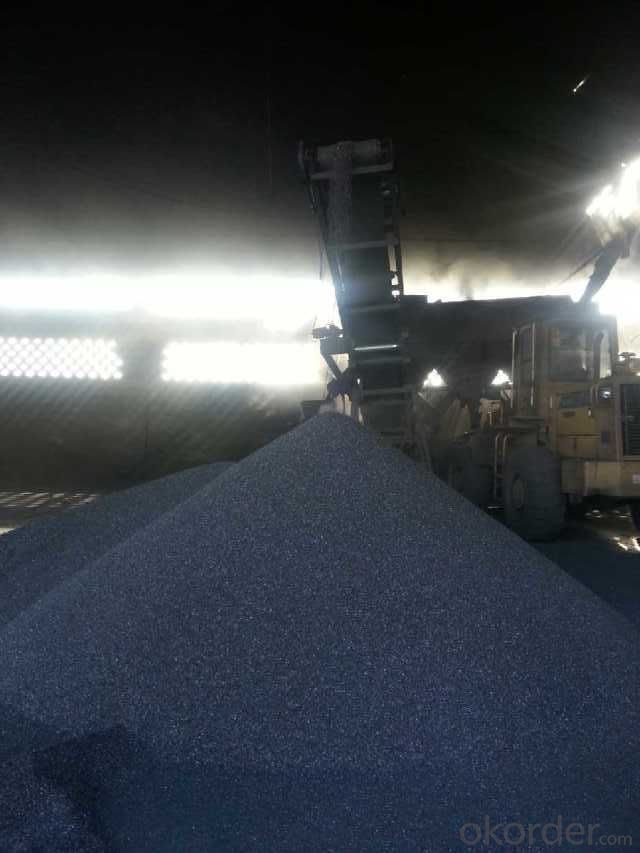
FAQ:
Injection Carbon FC95 with good and stable quality
Why we adopt carbon additive?
Carbon Additives used as additive in steel making process. It made from well-selected Tai Xi anthracite which is low in content of ash, sulphur, phosphorus, high heat productivity, high chemically activation.
Mainly industry property of it is: instead of traditional pertroleum coal of Carbon Additives, reduce the cost of steelmaking.
- Q: How is carbon formed?
- Carbon is formed through various natural processes, primarily through the cycle of life and death of living organisms. The formation of carbon starts with the process of photosynthesis in plants, where they use sunlight, water, and carbon dioxide from the atmosphere to produce glucose. This glucose is then converted into other organic molecules, such as carbohydrates, fats, and proteins, which form the fundamental building blocks of all living organisms. When plants and animals die, their remains and waste products are broken down by decomposers like fungi and bacteria. During this decomposition process, carbon is released back into the environment in the form of carbon dioxide or methane gas. Additionally, some of the organic matter may become buried under layers of sediment, where it undergoes a process called fossilization over millions of years. This fossilization process, combined with heat and pressure, transforms the organic matter into fossil fuels such as coal, oil, and natural gas, which are rich sources of carbon. Apart from the biological processes, carbon can also form through geological processes. Volcanic eruptions release carbon dioxide into the atmosphere, and over long periods of time, this carbon dioxide can dissolve in water and combine with minerals to form rocks like limestone. These rocks act as a carbon sink, storing large amounts of carbon over geologic timescales. Overall, carbon is formed and cycled through a complex interplay of biological and geological processes, playing a crucial role in maintaining the balance of carbon in the Earth's atmosphere and supporting life as we know it.
- Q: Method for making carbon fiber board
- Carbon fiber sheet is a carbon fiber heating paper, which is insulated and protected by epoxy resin.
- Q: Why is the solubility of carbon in austenite larger than that in ferrite?
- Its properties are similar to that of pure iron, and its plasticity and toughness are good, and its strength and hardness are low. It is usually massive or flaky in steel.The austenite structure is a face centered cubic lattice with a gap radius (0.414~0.225). Because of the larger size of the lattice gap, the solubility of carbon in gamma -Fe is relatively large. It has good plasticity.
- Q: What are the limitations of carbon dating?
- One limitation of carbon dating is that it can only be used to date organic materials up to around 50,000 years old. Additionally, the dating method can be affected by contamination or mixing of materials, which can lead to inaccurate results. Furthermore, carbon dating relies on the assumption that the atmospheric concentration of carbon-14 has remained constant over time, which is not always the case. Finally, carbon dating is not suitable for dating objects that do not contain carbon, such as rocks or minerals.
- Q: Excuse me, carbon steel, carbon steel pipe, seamless steel pipe, spiral steel pipe, what is the difference?
- There is no joint in the whole. The material can be used according to the needs, often used for high temperature, high pressure and other fluids. Hence, it is called seamless steel tube. The spiral steel tube is also formed by the heating and rotating of the strip steel. The utility model is suitable for the fluid below 30Kg, and the material can replace the seamless pipe with the big caliber and difficult to be manufactured according to the requirement, and is suitable for the medium and low pressure fluid with large caliber.
- Q: A carbon Roast Lamb Leg stores need to how much money
- Do about 50 thousand! Do not have their own skills, you have to learn, have time to look at the Weifang green, Mongolia edge, taste and scale are pretty good!
- Q: How do human activities contribute to carbon emissions?
- Carbon emissions are contributed to by human activities in several ways. One of the main sources of carbon dioxide emissions is the burning of fossil fuels for electricity, transportation, and industry. When coal, oil, or natural gas is burned, carbon is released into the atmosphere. Additionally, carbon emissions are also caused by deforestation and changes in land use. Trees play a critical role in absorbing carbon dioxide, so when forests are cleared for agriculture or urbanization, the stored carbon is released back into the atmosphere. Furthermore, carbon emissions are released through industrial processes such as cement production and chemical manufacturing. Lastly, methane, a powerful greenhouse gas that contributes to global warming, can be produced through human activities like agriculture and livestock farming. In conclusion, our reliance on fossil fuels, deforestation, industrial processes, and certain agricultural practices all contribute to carbon emissions, worsening the problem of climate change.
- Q: What is carbon neutral packaging?
- Carbon neutral packaging refers to packaging materials and processes that have a net-zero carbon footprint. It means that the emissions produced during the production, transportation, and disposal of the packaging are offset or balanced by activities that remove or reduce an equivalent amount of carbon dioxide from the atmosphere. This approach helps minimize the environmental impact of packaging and contributes to sustainability goals by reducing greenhouse gas emissions.
- Q: Learn photography for nearly half a year, has always wanted to buy a tripod, want to buy carbon fiber tripod, what brand is better? The machine is D700+24-70About 3000 is too expensive ~ consider 1000 more just fine. Wage earners!
- The three tripod has such a word: buy third tripod to know the first two are white bought!This sentence is a lot of friends with real money summed up, and hope to see!The three tripod is the most important, safe and reliable, and then the price, can not guarantee the safety of equipment, the price is cheaper and useless.The more than 1000 budget recommendations for the selection of source or berno, quality guaranteed, price is also good. If not on the cannon, not in harsh environment, the maximum diameter of 25mm, 4 section can also (cheap).Finally: carbon fiber hundreds of three tripod is not necessarily not, but never heard of this three foot will drop the camera, my answer can only represent personal views, for a reference.
- Q: How does carbon affect the color of gemstones?
- Gemstones can display a significant variation in color due to the presence of carbon. Carbon is one of the primary factors responsible for the coloration of specific gemstones. Diamonds, for instance, are a well-known example. They consist of carbon atoms arranged in a crystal lattice structure. The color of a diamond can be influenced by impurities or defects within this structure. When a diamond contains a high concentration of carbon impurities, it may exhibit a yellow or brown tint. These diamonds, known as "fancy colored diamonds," are graded on a scale ranging from D (colorless) to Z (light yellow or brown). The intensity of the color increases with a higher presence of carbon impurities. Conversely, diamonds with fewer carbon impurities appear more colorless. Carbon also affects the color of other gemstones. For instance, certain types of sapphires may contain traces of carbon, resulting in a grayish or blackish appearance. These sapphires, known as "black sapphires" or "star sapphires," are highly sought after due to their unique coloration. Similarly, carbon impurities in rubies can give them a purplish hue. It is important to note that while carbon plays a role in gemstone coloration, it is not the sole determining factor. Other elements or impurities, as well as the crystal structure and light absorption properties of the gemstone, also contribute significantly. Ultimately, the presence of carbon in gemstones contributes to a wide range of colors, enhancing their allure and desirability within the field of gemology.
Send your message to us
Steel Plant and Manufacturer Injection Carbon FC95 for
- Loading Port:
- Tianjin
- Payment Terms:
- TT OR LC
- Min Order Qty:
- 20 m.t.
- Supply Capability:
- 5000 m.t./month
OKorder Service Pledge
OKorder Financial Service
Similar products
Hot products
Hot Searches

